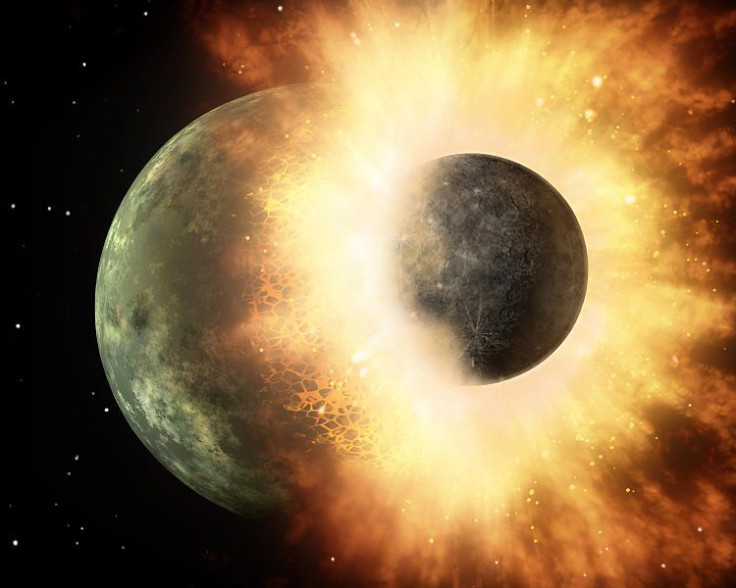Young Earth's Collision With A Near Twin Created The Moon: Study

The moon may have formed when a primordial planet with a chemical composition strikingly similar to that of Earth collided with our planet, according to a new study published Thursday in the journal Nature. The study was carried out to answer a long-standing puzzle -- why are Earth and lunar rocks more similar than expected in terms of chemical composition?
According to the widely accepted “giant impact hypothesis,” proposed in the 1970s, the moon is believed to have been formed about 4.5 billion years ago when a Mars-sized planet slammed into early Earth. This theory suggests that most of what became the moon came from this “giant impactor.”
“So if the impactor had a different composition from the Earth, we should expect the Moon to have a different composition,” Hagai Perets, one of the study's authors, reportedly said. However, this is not the case. Study of lunar rocks has shown that the moon and Earth are “almost identical” in their composition. “This is one of the major challenges for this really beautiful giant impact hypothesis,” Perets added.
Now, according to findings of simulations of the solar system formation carried out by researchers -- detailed in the study -- the impactor planet might very well have resembled Earth. This close resemblance can be explained by the fact that given their similar distance from the sun, they would have formed from the same kind of orbiting proto-planetary material.
The model indicated that there was a 20 to 40 percent chance that the impact that created the moon could have occurred between such similar proto-planets -- much higher odds than the previously estimated 1 percent.
“The Earth and the moon are not twins born from the same planet, but they are sisters in the sense that they grew up in the same environment,” Perets reportedly said. “(Now) I am even more confident about the giant impact hypothesis.”
© Copyright IBTimes 2024. All rights reserved.





















